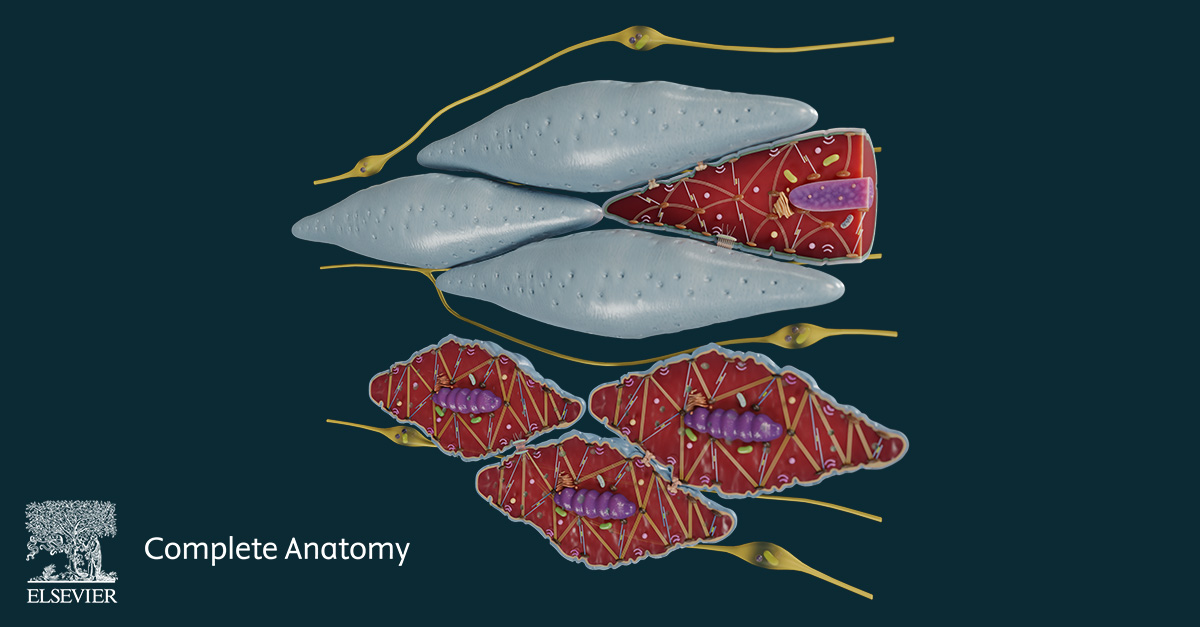
Smooth muscle is one of the three types of muscle found in the body; cardiac and skeletal muscle being the other two. Smooth muscle is an involuntary muscle, meaning it is not under conscious control. It is found almost everywhere in the body. For example, it can be found in the gastrointestinal tract, respiratory tract and reproductive tracts to name a few.
Smooth muscle is composed of specialised cells that are elongated in shape, or fusiform. Each cell is encased by an external lamina and a network of fine reticular fibres. Within the smooth muscle cell is a single nucleus. The cytoplasm is called the sarcoplasm. The sarcoplasmic organelles include mitochondria, rough endoplasmic reticulum, free ribosomes, glycogen granules and a Golgi apparatus.
Smooth muscle does not have striations, unlike skeletal and cardiac muscle. Instead, the myofilaments in smooth muscle are less organised. Specifically, the sarcoplasm contains three myofilaments: thick myofilaments composed of myosin, thin myofilaments composed of actin and tropomyosin, and intermediate filaments composed of desmin or vimentin. The smooth muscle cells are interconnected by gap junctions. Together they form sheets or aggregated bundles of muscle found in most tissue of the body.
Smooth muscle regulates physiological processes such as digestion, respiration, reproduction and blood flow. The muscle is specialised to allow prolonged periods of contraction without fatiguing. This contraction is regulated by the autonomic nervous system, by both sympathetic and parasympathetic nerves. For example, the sympathetic nervous system can slow down digestion and the parasympathetic nervous system can increase the rate of digestion by affecting the smooth muscle of the gastrointestinal tract. Contractions can also be controlled by hormones released from the posterior pituitary gland. For example, oxytocin released from the pituitary can control uterine smooth muscle during childbirth.
Check out the new Smooth Muscle Tissue Detailed Model in Complete Anatomy to learn more!